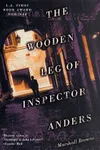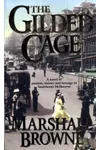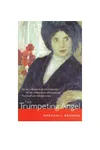Picture an Australian storyteller who traded boardrooms for gritty crime scenes, crafting tales of flawed heroes and shadowy villains—meet Marshall Browne! Born in Melbourne in 1935, Browne was a banker turned crime fiction maestro, whose Inspector Anders series captivated readers with its brooding atmosphere and moral complexity. His unique journey and gripping novels make him a hidden gem in Australian literature.
From a life of international finance to penning award-winning mysteries, Browne’s story is as intriguing as his books. Let’s dive into the world of this sixth-generation Australian, whose tales of courage and corruption still resonate today.
The Making of Marshall Browne
Marshall Browne was born on November 27, 1935, in Melbourne, into a family with deep Australian roots—his ancestor helped found the Bank of New South Wales. Before becoming a novelist, Browne led a dynamic life as a merchant banker for 37 years, working in Hong Kong, London, and even Bhutan. His military service as a commando in the Australian forces and a paratrooper in the British forces added grit to his worldview, shaping the tough, introspective heroes of his fiction. In his later years, Browne settled in Melbourne with his wife, Merell, an interior designer, and began crafting stories that blended his global experiences with a sharp eye for human nature.
Marshall Browne’s Unforgettable Stories
Browne’s crime fiction stands out for its atmospheric settings and damaged yet determined protagonists. His most famous work, The Wooden Leg of Inspector Anders (1999), introduces a one-legged Italian detective navigating a corrupt southern Italian city to solve a judge’s murder. The novel’s taut prose and moral dilemmas earned it the 2000 Ned Kelly Award for Best First Crime Novel and a Los Angeles Times Book Prize nomination. Its sequels, Inspector Anders and the Ship of Fools (2002) and Inspector Anders and the Blood Vendetta (2006), deepen the detective’s battle against systemic corruption.
Browne also explored historical and international settings. His Melbourne Trilogy—The Gilded Cage (1996), The Burnt City (1999), and The Trumpeting Angel (2001)—weaves thrilling tales of late 19th-century Melbourne, rich with political intrigue and vivid characters. In The Eye of the Abyss (2003), Browne shifts to Nazi Germany, following a one-eyed banker, Franz Schmidt, in a tense fight against oppression. His 2005 novel, Rendezvous at Kamakura Inn, features a disgraced Japanese detective unraveling a web of secrets in a snowy retreat, showcasing Browne’s knack for global suspense.
Known for his sophisticated style, Browne crafted heroes with physical or psychological scars, reflecting his fascination with resilience. Critics compared his work to Ruth Rendell and Ian Rankin, praising its elegant plotting and immersive worlds.
Why Marshall Browne Matters
Marshall Browne’s impact lies in his ability to blend gritty crime narratives with profound human struggles, earning him a loyal following and critical acclaim. His Inspector Anders series brought a fresh perspective to crime fiction, with its Italian setting and introspective hero, while his historical novels illuminated Australia’s past. Awards like the Ned Kelly and nominations for the Gumshoe Award highlight his influence in the genre. Browne’s legacy endures through readers who cherish his intelligent, atmospheric storytelling, proving that even a late-career pivot can leave a lasting mark.
About Marshall Browne
- Born: November 27, 1935, Melbourne, Australia
- Died: February 14, 2014, Melbourne
- Key Works: The Wooden Leg of Inspector Anders, The Eye of the Abyss, Rendezvous at Kamakura Inn
- Awards: 2000 Ned Kelly Award, 1999 My Brother Jack Short Story Award
Ready for a thrilling read? Snag The Wooden Leg of Inspector Anders and dive into Marshall Browne’s gripping world of crime and courage!










